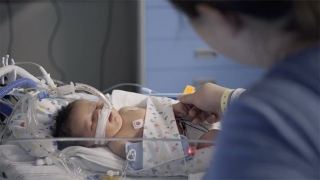 Researchers at Children's Hospital of Philadelphia (CHOP) have led an international group of experts in developing new guidelines for neonatal resuscitation research. The guidelines, developed by the International Liaison Committee on Resuscitation Neonatal Life Support Task Force, will standardize data definitions for those engaged in this area of research, allowing for better comparisons across studies and ultimately better outcomes.
Researchers at Children's Hospital of Philadelphia (CHOP) have led an international group of experts in developing new guidelines for neonatal resuscitation research. The guidelines, developed by the International Liaison Committee on Resuscitation Neonatal Life Support Task Force, will standardize data definitions for those engaged in this area of research, allowing for better comparisons across studies and ultimately better outcomes.
Clinical research on neonatal resuscitation has accelerated over recent decades, but there are no standardized definitions or reporting guidelines for neonatal resuscitation clinical studies, making it difficult to compare studies or make clinical recommendations. To address this, the International Liaison Committee on Resuscitation Neonatal Life Support Task Force established a working group to develop reporting guidelines for neonatal resuscitation, based on similar guidelines that were developed for adults in 1990 in Utstein Abbey, Norway.
The Utstein-style reporting guidelines focus on resuscitation of newborns immediately after birth for respiratory failure, bradycardia, severe bradycardia, or cardiac arrest. The researchers identified seven relevant domains: setting, patient, antepartum, birth/pre-resuscitation, resuscitation process, post-resuscitation process, and outcomes. Within each domain, relevant data elements were identified as core versus supplemental. The researchers determined that core data elements should be collected and reported for all neonatal resuscitation studies, while supplemental data elements may be collected and reported using standard definitions when possible.
"We hope the Neonatal Utstein reporting guidelines will assist investigators engaged in neonatal resuscitation research and facilitate data pooling in meta-analyses, enhancing the strength of neonatal resuscitation treatment recommendations and subsequent guidelines," said first author Elizabeth E. Foglia, MD, MA, an attending neonatologist with the Division of Neonatology at Children's Hospital of Philadelphia.
Learn more about the new guidelines, which were published in Pediatrics, here.






